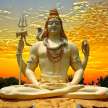
One of the two great epics of ancient Indian literature is the Ramayana; the other is the Mahabharata. It is regarded as one of the foundational texts of Hinduism and is credited to the sage Valmiki. The seventh incarnation of the god Vishnu, Rama, has adventures, hardships, and victories that are chronicled in the Ramayana.
Rama's mission to free his wife Sita from the demon king Ravana's abduction is the core storyline of the Ramayana. This is a shortened version of the narrative:
The Childhood and Birth of Rama: King Dasharatha of Ayodhya and Queen Kausalya were the parents of Rama. Dasharatha made a huge sacrifice in order to bear children, which led to his birth.
Alongside his brothers Bharata, Lakshmana, and Shatrughna, Rama grew up. Everyone adored him and he had training in many different skills.
Marriage to Sita: After other princes had attempted and failed to break Shiva's bow, Rama was able to win the hand of Sita, the daughter of King Janaka of Mithila.
After a lavish wedding celebration, Rama and Sita left for Ayodhya.
Banishment and Exile: Dasharatha unwillingly banished Rama to the wilderness for fourteen years after making a pledge to his second wife, Kaikeyi.
Sita, the wife of Rama, and Lakshmana, his loyal brother, decided to go with him into exile.
They met many gurus and overcame many obstacles during their banishment, one of which was a showdown with the demon Surpanakha.
Sita was kidnapped by Ravana, the formidable demon king of Lanka, who used his demonic followers and cunning tactics to get Sita.
Sita was imprisoned in Lanka as Rama and Lakshmana made frantic efforts to find her.
Partnership with Sugriva and Hanuman: Rama became friends with the banished monkey king Sugriva as well as his loyal minister Hanuman.
In order to cross the ocean and get to Lanka, Rama constructed a bridge with the aid of Hanuman and his army of monkeys.
Combat with Ravana: Rama engaged Ravana and his army of demons in a fierce combat.
Rama overcame Ravana's powerful army with the aid of his allies, who included Hanuman and the army of monkeys.
Rescue of Sita: Rama slew Ravana and freed Sita during a bloody struggle.
But because some of Rama's countrymen doubted Sita's chastity, Sita was forced to undergo an agape pariksha, or trial by fire, to demonstrate her chastity.
After being exiled for fourteen years, Rama, Sita, and Lakshmana made their way back to Ayodhya.
Following his coronation, Rama became King Rama of Ayodhya, a period of peace and prosperity known as the "Rama Rajya."
In conclusion, the Ramayana imparts valuable moral teachings about responsibilities, morality, fidelity, and the victory of good over evil.
Every year, during the Diwali festival, it is observed to honor Rama's return to Ayodhya and the triumph of light over darkness.
The Ramayana is still an inspiration to millions of people worldwide, having been narrated and reinterpreted in countless ways throughout history.
The Ramayana is an epic poem with many levels of meaning and value, not merely a plot. Here are a few of the main ideas and interpretations of the Ramayana that are frequently mentioned:
Dharma (Righteousness): Upholding one's responsibility, or dharma, is crucial, and it is one of the main themes of the Ramayana. Even in the face of hardship, the main character, Rama, demonstrates righteousness and performs his responsibilities as a son, spouse, and king.
Triumph of Good over Evil: The Ramayana portrays the eternal conflict between the forces of good and evil, with Rama standing in for the former and Ravana for the latter. The victory of goodness and justice over vice and wickedness is symbolized by Rama's victory over Ravana.
Loyalty and Devotion: Through the lives of figures like Lakshmana, Hanuman, and Sita, the epic highlights the concepts of devotion and loyalty. Their steadfast devotion to Rama in the face of many adversities emphasizes the value of loyalty in partnerships.
Sacrifice and Selflessness: The Ramayana contains many examples of selflessness and sacrifice, especially during Rama's banishment and Sita's tribulations. To keep his father's word, Rama voluntarily goes into exile, and Sita goes through much hardship to demonstrate her purity and dedication.
Family and Relationships: The epic examines a number of familial and interpersonal dynamics, including as those that exist between spouses (Rama and Sita), siblings (Rama, Lakshmana, Bharata, and Shatrughna), and parents and children (Dasharatha and Rama). These connections act as role models for respect for one another and desirable behavior.
The Power of Devotion: The Ramayana emphasizes the ability of devotion and faith to transform, especially via Hanuman's story. Because of his unshakable loyalty to Rama, Hanuman is able to accomplish amazing feats and is essential to Rama's quest.
Unity and Brotherhood: As evidenced by Rama's alliances with Ravana's brother Vibhishana and monkey king Sugriva, the Ramayana upholds the ideals of unity and brotherhood. These partnerships serve as an example of how crucial cooperation and unity are to overcome hardship.
Karma and Destiny: The epic explores the ideas of karma, or action, and destiny, putting forth the idea that a person's choices determine their fate. In the end, Rama's noble actions and devotion to dharma bring about his victory and the accomplishment of his destiny.
All things considered, the Ramayana is a rich tapestry of spiritual, moral, and ethical lessons that appeal to audiences of all ages and cultures. Its ageless ideas still encourage people to pursue morality, develop virtues, and preserve the ideals of compassion, love, and devotion.






Comments
There are no comments for this story
Be the first to respond and start the conversation.